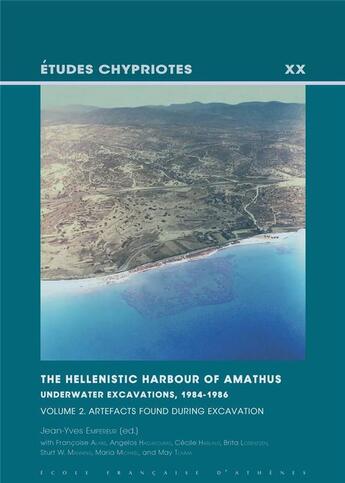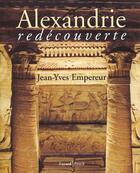Résumé:
Après avoir livré dans le volume 1 les résultats des trois campagnes de la fouille du port d'Amathonte et leurs conséquences sur l'histoire de ce monument submergé (Études Chypriotes XIX), nous présentons ici le matériel mis au jour lors de la fouille (1984-1986) en deux parties distinctes :... Voir plus
Après avoir livré dans le volume 1 les résultats des trois campagnes de la fouille du port d'Amathonte et leurs conséquences sur l'histoire de ce monument submergé (Études Chypriotes XIX), nous présentons ici le matériel mis au jour lors de la fouille (1984-1986) en deux parties distinctes : tout d'abord, les artefacts découverts dans le bassin du port, céramiques, amphores, objets métalliques, datant de la haute époque hellénistique, fin du IVe siècle ou début IIIe siècle avant J.-C. La seconde partie concerne le matériel provenant des puits creusés à l'époque romaine tardive dans la partie nord du bassin du port, alors hors d'eau : dans la céramique, des godets de sakieh et des frag-ments de céramique qui recollent depuis les couches supérieures jusqu'au fond des puits, tout comme pour les amphores, l'ensemble donnant un faciès homogène de la fin du VIe - début du VIIe siècle après J.-C., certainement lié aux activités artisanales dans la partie basse de la ville abandonnée de ses habitants, quelques décennies avant l'arrivée des Arabes. Le matériel métallique offre, comme pour la période hellénistique, une panoplie d'instruments de pêche et l'ensemble des os animaux permet de dresser un des rares tableaux de la faune présente à Chypre à l'époque romaine tardive. Enfin, l'analyse du bois des sakiehs montre l'emploi des espèces poussant dans la région à cette période, la datation par le 14 C des fragments ligneux confirmant la datation proposée par les céramologues.
In Volume One we published the results of the three excavation campaigns conducted on the port of Amathus and the light shed by these results on the history of this sunken monument (Études Chypriotes XIX). Here we shall present in two distinct sections the archaeological material that was revealed during the excavations (1984-1986). First, we shall study the artefacts discovered in the harbour basin: pottery, amphorae and metallic objects dating from the Early Hellenistic period (end of 4th and beginning of 3rd century BC). The second section covers the material found in freshwater wells that were dug during the Late Roman era in the northern part of the harbour basin, which was then above sea level. As regards the pottery, including sakieh jars and other pottery fragments from the upper to the lower layers of the wells, as well as the amphorae, the ensemble uniformly displays features of the end of the 6th - beginning of the 7th century AD, linked to artisanal activities in the lower part of the town which was abandoned by its inhabitants a few decades before the arrival of the Arabs. The metallic material presents, in a similar fashion to that of the Hellenistic era, a variety of fishing gear, while the ensemble of animal bones provides us with a rare picture of the fauna that was present on Cyprus in the Late Roman period. Lastly, the analyses conducted on wood from the sakiehs reveals the use of tree species that grew in the region at that time, and 14 C dating of the wood fragments confirms the dating proposed by the ceramologists.
Donner votre avis
















